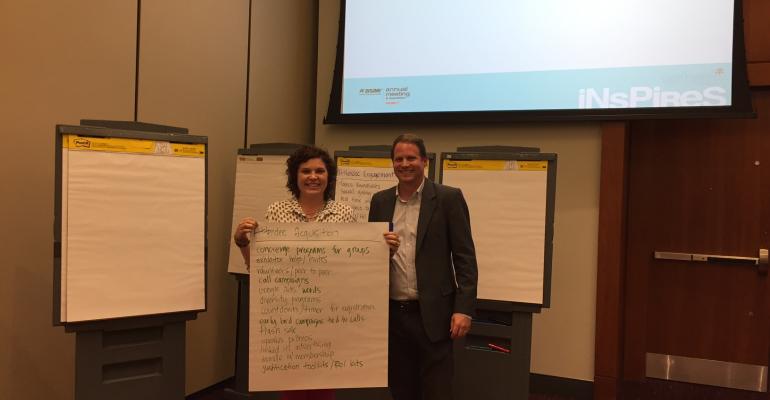You know your target audience would just love your event. The problem is, how do you get your message out in ways they will find irresistible? The key is to know your members, have a show strategy that ties in with your organization’s overall strategic goals, and get buy-in from all the departments in your organization that contribute in some way to the event.
Once you have done that homework, it’s time to get down to determining what marketing mix will be your best attendee-acquisition bet, said Nicole Bowman, vice president, marketing and communications, International Association of Exhibitions and Events, and Scott Craighead, IAEE vice president, exhibitions and events, during a session at the American Society of Association Executives Annual Meeting and Exposition, held August 12–15 in Toronto.
Is the Marketing Mix Evolving?
Bowman pointed to the Center for Exhibition Industry Research Cost to Attract report, which was originally released in 2013 and updated last year. One thing that didn’t change much over the three-year period was the popularity of email marketing, the preferred channel for 84 percent of respondents. In fact, the report found that email and direct mail still make up the largest share of event marketing budgets, together constituting about half of the budget for all types of exhibitions, she said.
Total attendee marketing budgets also did not change between 2013 and 2016—coming in around $75,000 on average. However, Bowman added, when you factor in inflation, the number was actually 4.5 percent lower in real dollars in 2016. Interestingly, even with flat budgets, costs per verified attendee decreased from $20.10 in 2013 to $14.30 in 2016. This may be because large event organizers—those who draw more than 10,000 attendees—are shifting away from expensive channels such as direct mail, while smaller and mid-sized events are upping their social media, email, and other more-economical digital marketing options.
The Must-Have: A Multi-Channel Approach
The report found that most organizations continue to diversify their messaging channels. IAEE’s multi-pronged approach to attendee acquisition for its events, including its Expo! Expo! Annual meeting and exhibition for expo organizers, includes these eight tactics:
• Email marketing. There’s a reason why this is the most popular channel, Bowman said.
• Personality quizzes. As one example, IAEE did a campaign around a “What Promo Product Are You” quiz. It was a fun way to generate some buzz, said Bowman.
• Retargeting (Or, as Bowman called it, “a marketer’s BFF”). While you may not know the term, it refers to those ads that follow you around the web once you click on a product, service, or program. “You get fast results and definable metrics. It’s really good for events, as well as products and services,” she said. For example, IAEE ran two retargeting campaigns to market Expo! Expo! to international and U.S. audiences. Starting six weeks out from the event, they garnered more than 147,000 impressions and more than 14,000 users, all at a cost-per-attendee of just $8.13.
• Hosted-buyer program
• First-timers program
• 20 under 30 program
• Chapter outreach
• Social media campaigns
Taking It to the Tabletops
During a tabletop discussion, session participants shared some of their best practices, including this idea which many in the room hadn’t known about: The Google Ad Grant program, where nonprofits can apply for a grant to recieve up to $10,000 each month in Google’s online advertising solution AdWords. https://www.google.com/grants/.. Other solutions included:
• Invite exhibitors to market your event directly to their client list. Some said they also invited their speakers to spread the word to their potential client or subscriber lists, and via their social media channels.
• Ask volunteers and board members to spread the word to their colleagues and connections.
• One person said, “We went old school and started mailing postcards and brochures, and doing telemarketing,” with good results.
• Include house ads across all the organization’s publications, websites, newsletters, and other properties.
• One group created a countdown clock for early-bird registration on its website. “It was retweeted and talked about a lot, and really drove early-bird registrations,” she said.
• Have telemarketers call hot prospects to extend the early-bird deadline unofficially using a special code.
• Hold a flash sale with reduced pricing for just a day or two. Some in the room said that could be the first step down a slippery slope though, so use it at your own risk.
• Buy LinkedIn ads.
• Bake the meeting registration fee into membership prices.
• Offer a justification toolkit that potential attendees can use to convince their bosses the event is worth the time and money to attend.
• Engage chapters to make grass-roots efforts on behalf of the national organization’s programs.
• Offer diversity programs with discounted rates or scholarships for key segments of your target audience.





